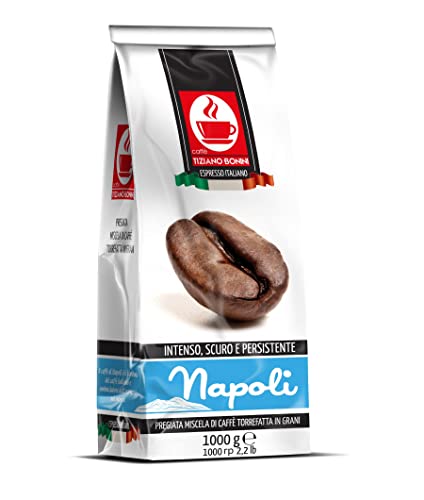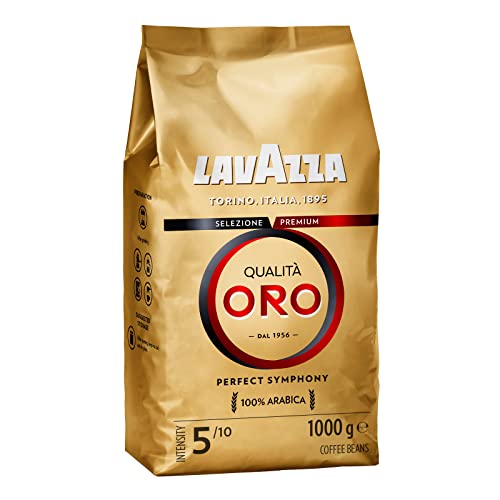The 10 Most Scariest Things About Arabica Coffee Beans 1kg
페이지 정보
작성자 Dorthea 작성일24-08-18 13:03 조회11회 댓글0건본문
 arabica coffee beans 1kg - https://compravivienda.com,
arabica coffee beans 1kg - https://compravivienda.com,The arabica bean is among the most prized coffee species. It grows at high elevations along the equator and requires specific climate conditions in order to flourish.
New varieties of coffee have been created that are more resistant against diseases and climate changes. These new varieties provide unique flavors that set them apart from other coffee types.
Origin
Arabica coffee beans are the beans of choice for most Western blends of coffee, and account for around 60 percent of the world's coffee production. They are more tolerant to drought and heat than other varieties of coffee, which makes them more suited to growing in warmer climates. These beans make a rich, creamy drink with a smooth flavor and a lower amount of caffeine. They are also an increasingly popular choice for drinks made with espresso.
Coffea arabica is an evergreen tree that grows in higher elevations. It prefers a tropical climate with temperatures between 15 and 25 degrees Celsius. This plant needs regular rainfall of between 1,200 and 2,200 mm annually. Researchers have created a variety cultivars that are cultivated. It has a high level of genetic diversity. Bourbon and Typica are two of the most important arabica coffee cultivars today.
Wild plants of the genus Coffea are bushy and their leaves are simple elliptic ovates to an oblong shape, 6-12 cm (2.5-3 in) long and 4-8 cm (2-3 in) wide. Fruits are drupes that contain two seeds, often referred to as coffee beans, inside the fruit. They are protected by an outer fleshy membrane that is typically black, red or purple and an inner skin that is typically pale yellow to pink.
Raw coffee beans have been consumed for centuries because of their unique flavor and stimulating qualities. The Robusta variety is the most popular blend of coffee, is best consumed moderately or lightly roasted. This preserves its natural properties and flavor. The first written record of coffee beans 1kg arabica drinking dates back to 1,000 BC, in the Kingdom Kefa, Ethiopia. Members of the Oromo Tribe crushed the beans and mixed them together with fat to create the paste, which was then consumed to boost the mood.
The geographical location, the conditions and farming practices of the region from which coffee beans are cultivated determine the precise origin of the coffee. It is similar to apples that are grown in different regions, and can be distinguished from one another by their distinctive taste and texture. To determine the origin of a specific coffee bean, FT/MIR spectrophotometry is used to detect indicators, such as trigonelline or chlorogenic acid which differ based on the climate in which the bean was cultivated.
Taste
The flavor of arabica beans is smooth, delicate and fruity with chocolate undertones. It is low in astringency and bitterness and is considered to be one of the highest-quality coffees on the market. It also has a lower caffeine content than Robusta coffee, which makes it the perfect choice for those who prefer a flavorful cup of joe without the high-sugar content of other drinks.
Several factors can affect the taste of arabica beans, including the variety and growing conditions processing methods, as well as roast level. There are many varieties of arabica coffee, including Bourbon, Caturra and Kona. Each has its own distinct flavor. The different levels of sugar and acidity in arabica coffee can also affect the overall flavor profile.
The coffee plant grows in the wild at elevations of up to 2,000 feet near the equator, but is most often cultivated by humans at a lower altitude. The plant produces yellow, red or purple fruit that contain two green seeds. These seeds are referred to coffee beans, and they are what give a cup of arabica coffee that distinctive taste. Once the beans have been dried, they take on the familiar brown color and flavor we all enjoy.
After the beans have been harvested, they can be processed using either the dry or wet method. The beans that have been processed with water are cleaned to remove the pulp that is left behind and then fermented before being dried in the sun. The wet process helps to preserve the arabica coffee's natural flavor profiles, while dry processing results in a stronger and earthy flavored.
The roasting of arabica coffee beans is an important stage in the process of production, as it can dramatically change the taste and smell of the final product. Light roasts bring out the natural flavors of the arabica bean, whereas medium and darker roasts enhance the flavors of the origin along with the characteristics of the coffee that are roasted. If you're looking to enjoy an extra special cup of coffee, consider choosing a blend made of all arabica beans. These higher-quality coffee beans are distinctive in flavor and aroma that can't be replicated by any other blend.
Health Benefits
The caffeine in coffee can give you the energy you require to get going in the morning. It is also known to have various health benefits and helps keep you alert throughout the day. It has a unique and intense flavor that can be enjoyed in many different ways. You can add it to ice cream or sprinkle it over desserts.
Arabica beans are the most adored and most favored choice of all coffee brands because they offer a well-balanced cup of joe that has smooth and creamy texture. They are usually roasted at a medium to dark level and have a fruity or chocolatey flavour. They are also known to have a smoother flavor and less bitterness than other beans like robusta.
The origin of arabica coffee beans dates back to around 1,000 BC when the Oromo tribes of Ethiopia first began drinking it as a stimulant. Then in the 7th century, Arabica was officially named as the coffee bean after it moved to Yemen where scholars roast and ground them. They then wrote the first written record of coffee making.
In India there are more than 4,500 coffee plantations are operating. Karnataka is the country's largest producer. The state produced a record amount of 2,33,230 metric tons of arabica coffee beans in the year 2017-18. Karnataka has a variety of arabica coffee varieties that include Coorg Arabica (also known as Coorg Arabica), Chikmaglur Arabica (also called Chikmaglur Arabica) and Bababudangiris Arabica.
Green coffee beans are high in antioxidants. They also contain large quantities of chlorogenic acids, which belong to a group of phenolic compounds. They are believed to possess anti-diabetic and cardioprotective properties. Roasting beans removes about 50% to 70% of these substances.
The arabica bean also contains a small amount vitamins and minerals. They are high in potassium, manganese and magnesium. In addition, beans are also a fantastic source of fiber, which aids in weight loss and lowers cholesterol levels.
Caffeine Content
When they are ground and roasted and ground, arabica coffee beans have an amount of caffeine that ranges between 1.1% to 2.9 percent which equates to 84 to 580 mg of caffeine per cup. This is considerably less than the caffeine content of Robusta beans which can have up to 4.4 percent caffeine. However, the exact amount of caffeine consumed will depend on factors such as the method of brewing and water temperature (caffeine is more readily extracted at higher temperatures) and the length of time that the beans are roasting (a darker roast generally has more caffeine than lighter roasts) and the extraction method.
Coffee also contains chlorogenic acids which are antioxidants and a part of the family of phenolic acids. These compounds are known to reduce glucose absorption and have been linked to decreased risk of developing heart disease, diabetes and liver disease. They are also known to boost the immune system and aid in weight loss.
Additionally, coffee contains some vitamins and minerals. It contains magnesium, Niacin and Riboflavin. Additionally, it has potassium and a small amount of sodium. It is essential to keep in mind that coffee in its pure form, without sugar or milk, should be consumed in moderation since it could cause diuretic effects on the body.
The background of the coffee plant is interesting. It was discovered by Oromo tribes in Ethiopia around the year 1000 BC. The tribes utilized to eat it to fuel themselves during long journeys. It was only when it was first grown as a drink after the Arabian monopoly was ended that it was given its name. Since then, it has become popular all over the world and has evolved into an international industry that offers countless benefits to both human health and the environment. Its success is due to the fact that it has a delicious flavor and a variety of health-promoting properties. It can be a healthy addition to your diet if consumed in moderation. In addition to being delicious, it can also give you an energy boost and help you be more productive and alert throughout the day.

댓글목록
등록된 댓글이 없습니다.

